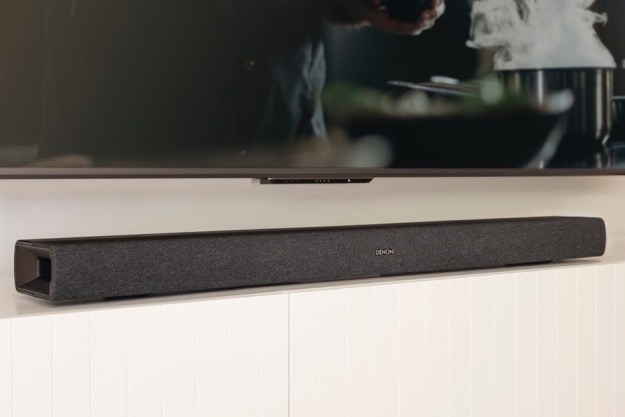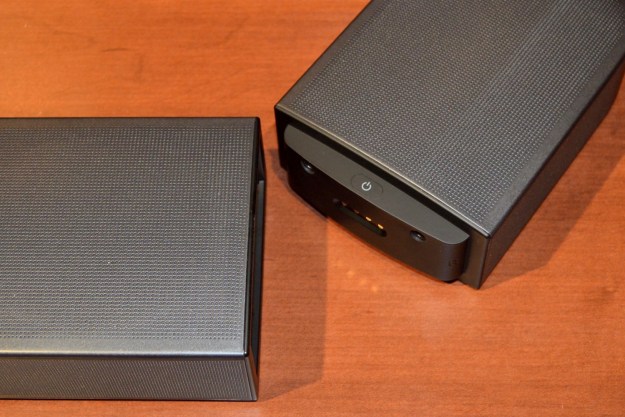
“JBL's Bar 9.1 offers a unique fully wireless design, but that feature comes at a high cost.”
- Super simple setup
- Big, powerful bass
- Convincing Dolby Atmos and 5.1 sound
- Convenient wireless speakers
- Supports eARC, 4K, Dolby Vision
- Not enough inputs
- Not enough EQ settings
- Dialogue needs a boost
- Mediocre for music
Soundbars have a tough job. The really good ones somehow manage to replace a full 5.1 home theater surround system with just a single elongated speaker enclosure, and maybe a wireless subwoofer.
Any soundbar that uses satellite speakers — whether wired to the soundbar or just wired to a power outlet — might produce better sound, but they do so at the cost of convenience and physical space, which is really the whole reason soundbars make sense to so many.
That’s what makes JBL’s Bar 9.1 so compelling: Using a pair of battery-powered totally wireless satellites, it not only promises the true acoustic separation of physical speakers, it also throws Dolby Atmos into the mix for an immersive 3D experience — all for around $1,000.
JBL has set itself a high, ahem, bar for the Bar 9.1. Does it succeed? Let’s find out.
Design
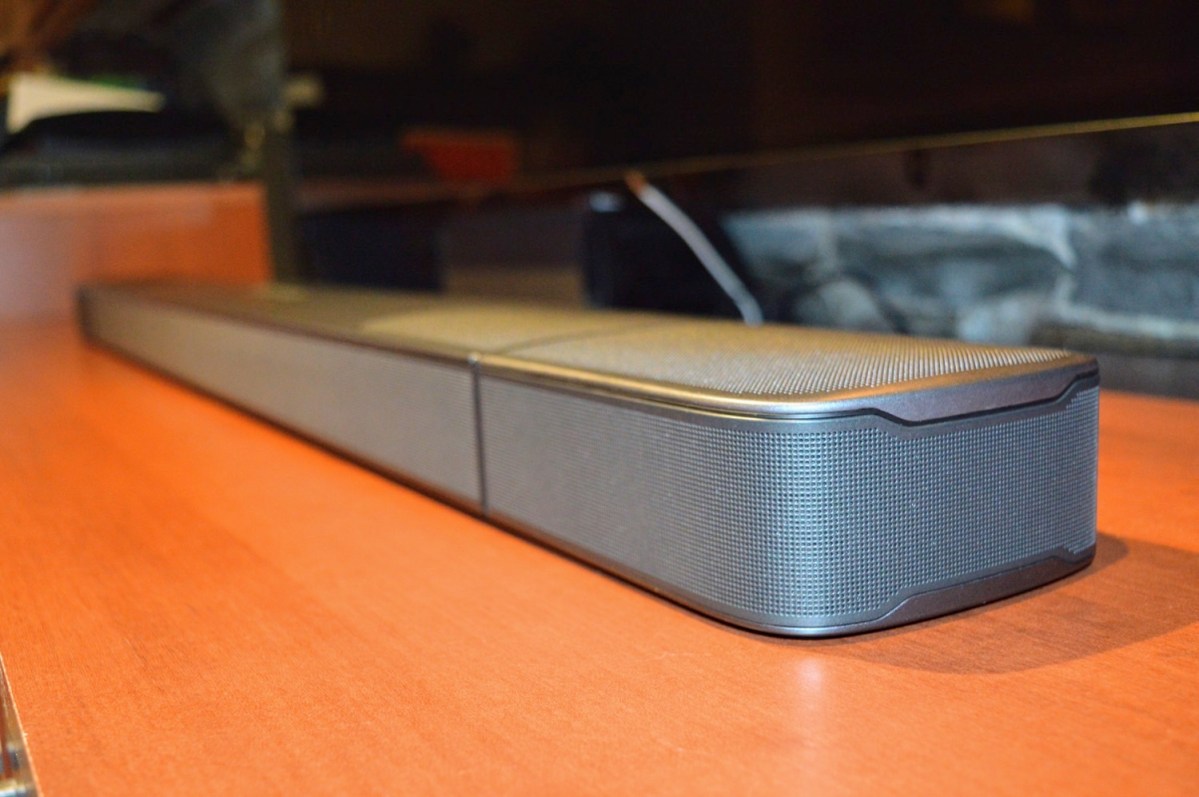
I personally don’t think soundbars should draw attention to themselves — at least not visually — and the Bar 9.1 makes every effort to keep its physical presence to a minimum. Frankly, it’s boring, but in the best possible way.
Its dark grey plastic housing has only the slightest sheen, and even at its widest — with both satellite modules attached to the ends — it’s still only 47 inches long. Detach those modules and you’re left with barely 35 inches.
It’s also amazingly short, at just under 2.5 inches tall. That ought to fit under all but the shortest of TV stands. The minimal set of four top-mounted controls are easily ignored, and the scrolling LED display on the front hides behind the speaker grille and is completely invisible when not in use.
The Bar 9.1 keeps its physical presence to a minimum. It’s boring-looking, but in the best possible way.
The subwoofer is a different story. It’s a decidedly bulky and boxy unit that will prove to be a challenge to disguise if you don’t want it to remain visible.
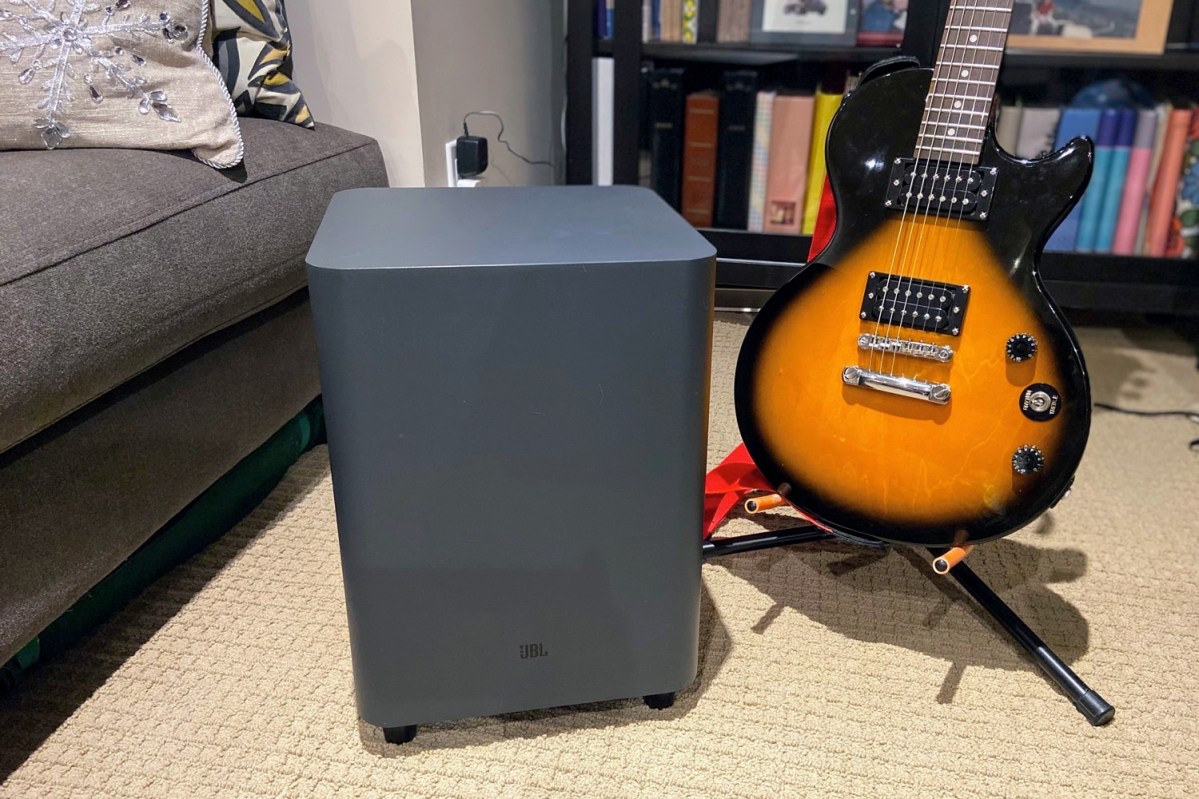
If you’re wondering about how those detachable wireless satellites work when the Bar 9.1 is wall-mounted (which you can do with the included hardware), it’s pretty awesome: The docking magnets are incredibly strong. When seated, it takes a concerted effort — and sometimes both hands — to yank them free. And though I didn’t test it, there’s an option to also wall-mount the satellites in their secondary locations too.
When fully charged, the satellites will give you about 10 hours’ worth of playtime, and a warning message will pop-up on the Bar’s display to let you know when they need a boost. Re-docking them is the easiest way to do this, but cleverly, the satellites have their own micro-USB ports, which means you could technically leave them in their rear or wall-mounted positions and simply run a micro-USB cable to them to keep them continuously charging. This might be an appealing option if you’re planning back-to-back screenings of the Lord Of The Rings movies because once depleted, the satellite’s batteries take three hours to fully recharge.
Soundbars are supposed to be simple to set up and use, but the JBL Bar 9.1 takes simplicity to a new level
There’s only one irregularity to this otherwise excellent design: In some markets, JBL includes a set of four end-caps to cover the exposed charging contacts on the bar and the satellites when they aren’t docked. Given the ability to leave the satellites in this state permanently thanks to those micro-USB charging ports, this makes a lot of sense. What doesn’t make sense is why the Bar 9.1 doesn’t always ship with them. Our review unit, for instance, did not have any in the box.
Setup
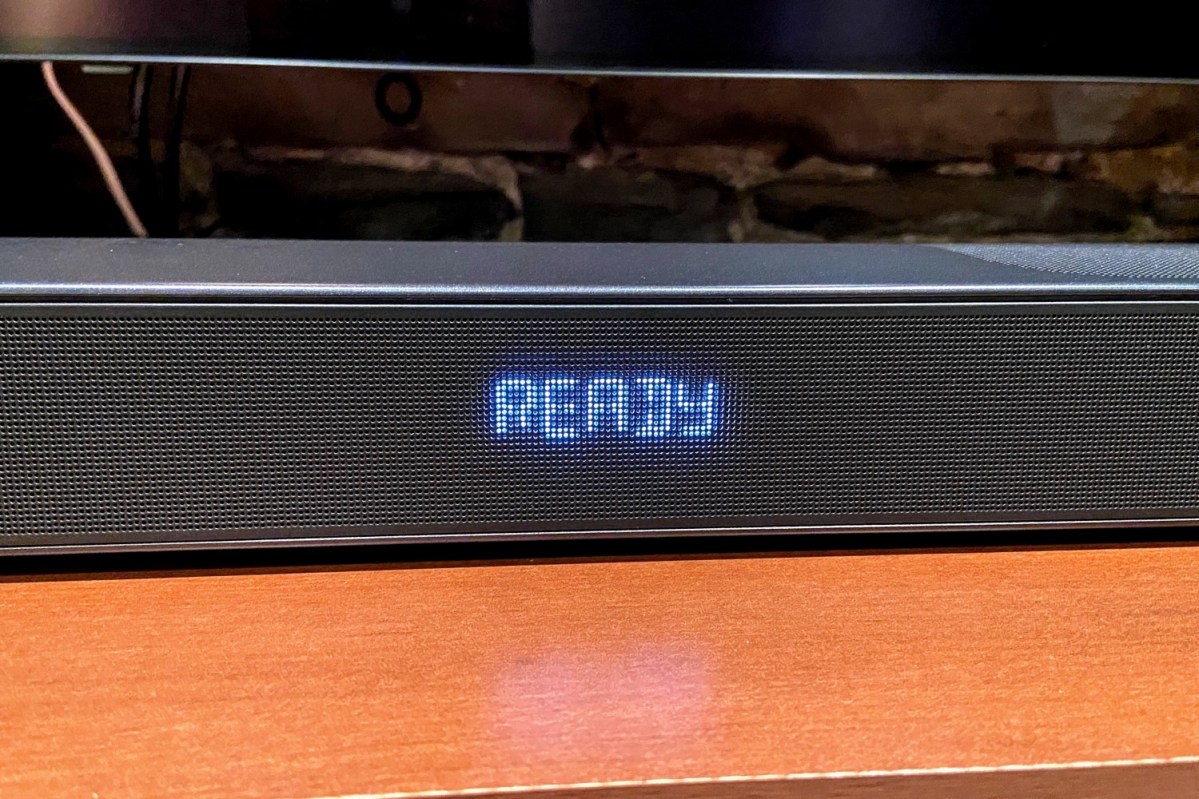
Yes, soundbars are supposed to be simple to set up and use, but the JBL Bar 9.1 truly takes simplicity to a new level. Once you’ve plugged the soundbar and subwoofer into their respective power outlets, and connected the bar’s HDMI-out port to your TV’s HDMI-ARC (or eARC) port with the included HDMI cable, you’re done with the basics.
The final step is to calibrate the system. Pull the surround modules from their homes aside the main bar, and set them beside you. A three-second press on one of the remote control’s buttons initiates a short but loud test sound which is picked up by the bar’s integrated mics. Place the surrounds in their final locations and repeat the test. That’s it. It took me longer to unbox the components than to get them set up.
You can also connect the Bar 9.1 to Wi-Fi for AirPlay or Chromecast music streaming. Oddly, this must be done using either Apple’s Home app or Google’s Home app on a smartphone or tablet. My attempts to use Apple Home failed, but Google Home got it up and running.
Connections
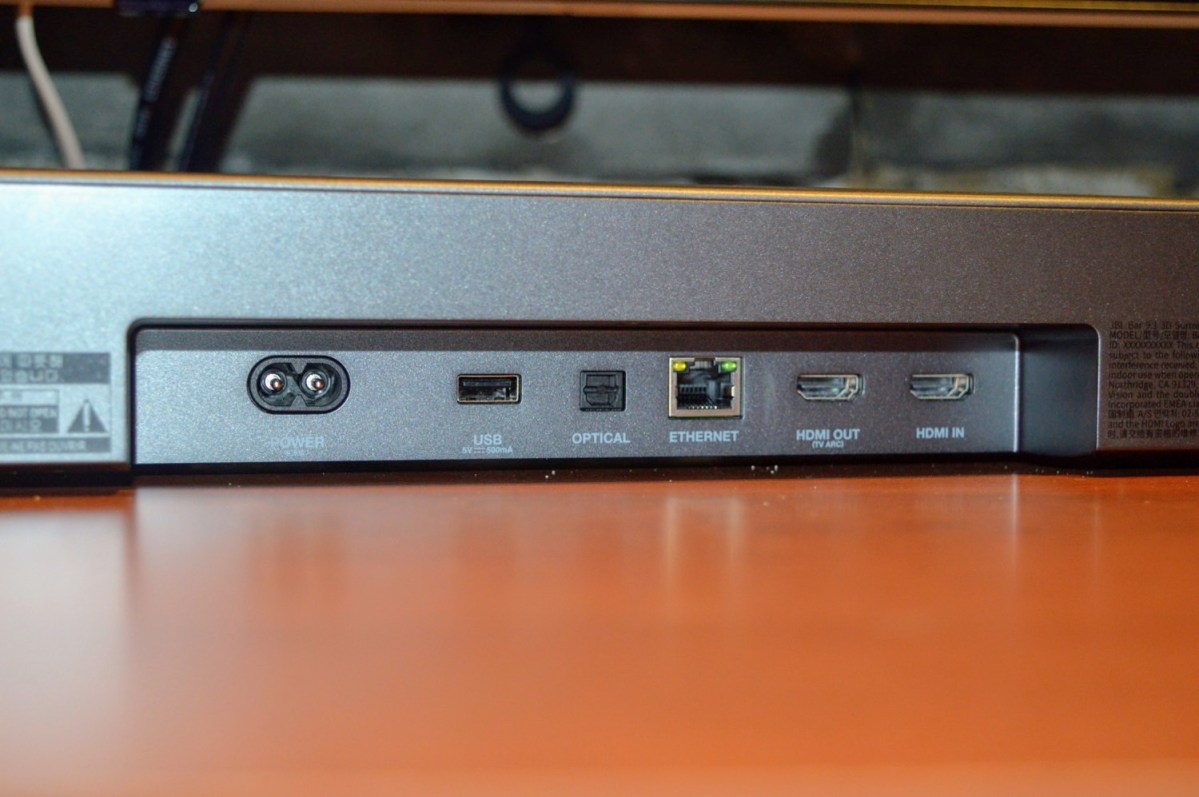
Simplicity is great, right up until it gets in the way of what you want to do. The JBL Bar 9.1’s ports are a good example: You get one HDMI input, one HDMI ARC output, an optical input, and a USB port.
This means that if you’ve got multiple source devices, like streaming players, Blu-ray players, game consoles etc., you’re going to have to make some choices around how they’re connected and how you switch between them. At this price, I think the Bar 9.1 should behave as a true A/V receiver replacement, with at least four HDMI inputs.
The inclusion of the optical port may be helpful for those with older, non-HDMI ARC TVs, but be warned: Dolby Atmos does not work over an optical connection, so if you want the full Atmos experience on an older TV, your Atmos source device must be connected to the Bar’s sole HDMI input.
The USB port is frankly a mystery to me. JBL says you can use it to play music from a USB stick or an external drive, but I can’t fathom why you would want to. It only supports MP3 files and there’s no way to control the playback at all.
Smart features
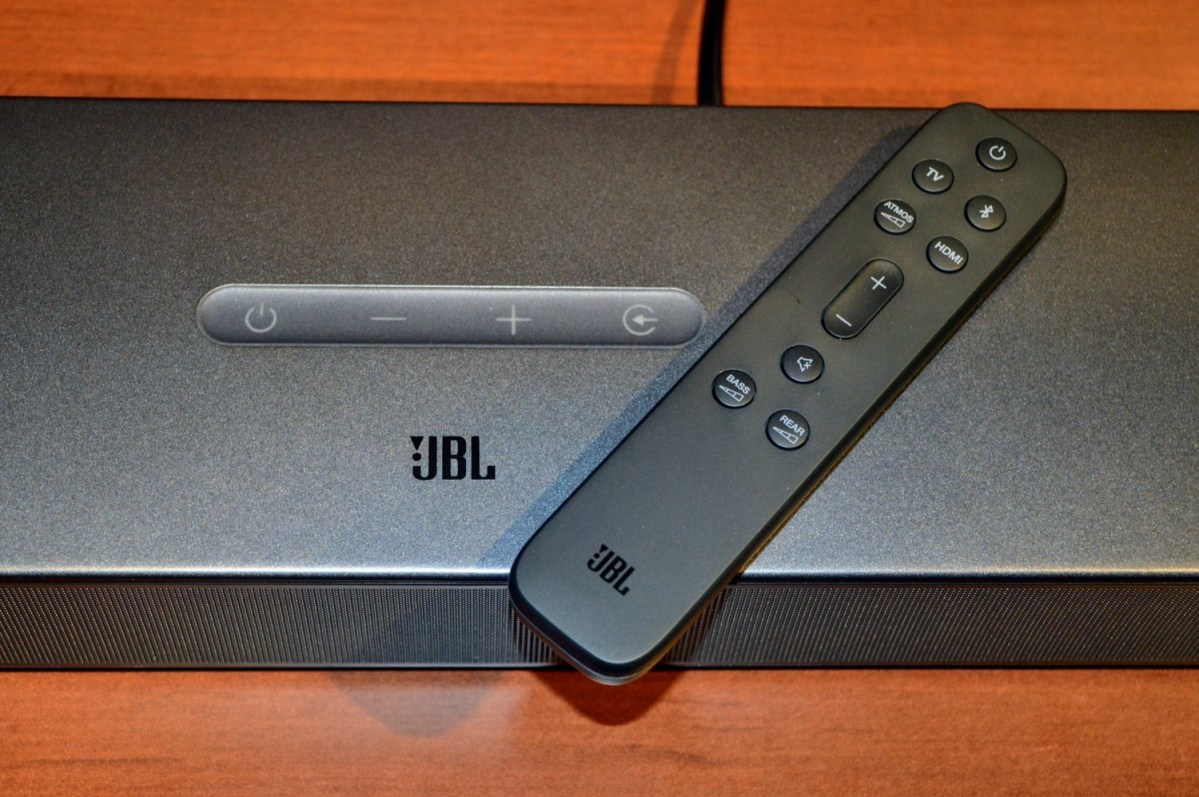
Despite the fact that most premium soundbars now come with some kind of voice assistant compatibility, the JBL Bar 9.1 does not claim to officially support any of them. Maybe it’s an oversight; I was able to configure the soundbar in both the Google Home and Apple Home apps, and Google Assistant and Siri both recognized it and let me initiate music streams.
Amazon’s Alexa appears to be the odd A.I. out, however.
A more puzzling question is why — with its dual onboard mics — the Bar 9.1 hasn’t been equipped as a true smart speaker? At less than half the price, the Sonos Beam lets you talk to Google Assistant or Alexa, and JBL’s own $400 Link Bar acts as a Google smart speaker and an Android TV streamer.
Sound quality
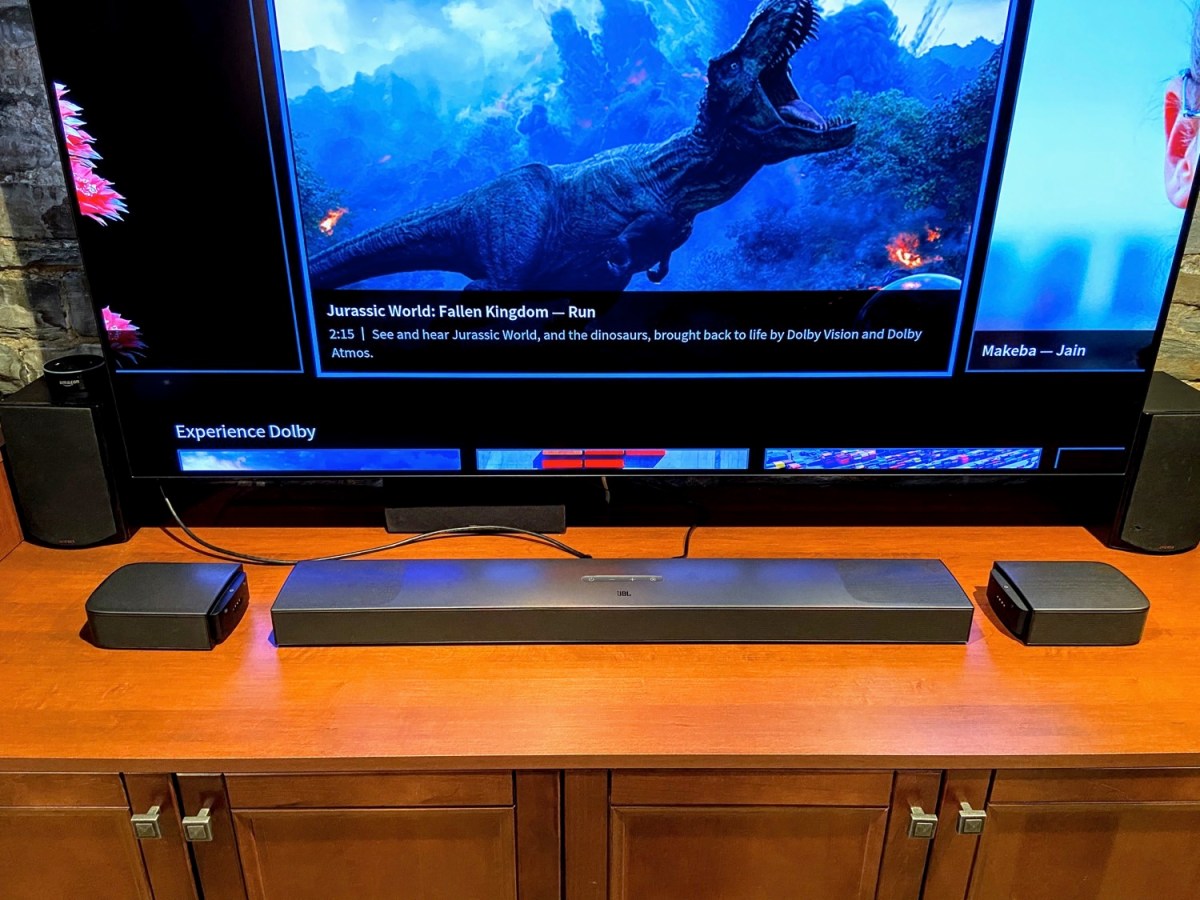
Overall, the JBL Bar 9.1 makes good on its promise to deliver a powerful home theater experience. When it comes to movies and shows with either a Dolby Atmos soundtrack, or even just a Dolby Digital 5.1 track, you’re immersed in a sphere of sound.
I had a blast watching John Wick Chapter 3: Parabellum, a movie that is tailor-made to show off the Bar 9.1’s strengths. Gunshots could be heard with precision from different corners of the room, while the motorcycle chase scene let you feel the growing whine of the bikes’ engines as they approached from behind and then drew level with Wick’s ride (though only briefly).
You may be tempted to leave the rear speakers docked to the soundbar but this should be avoided. The Bar 9.1 leans heavily on the placement of these satellites to provide a fulsome experience and it does a poor job of recreating spatial audio without them.
With a subwoofer as big and heavy and powerful as the one that comes with the Bar 9.1, you would expect some serious bass and it does not disappoint. The 10-inch downward-firing sub will effortlessly rattle your fillings loose if you let it. With 300 watts of power on tap, it’s a good thing the remote control lets you pick from five levels of bass response — I found that level five could get a wee bit uncomfortable at times.
But don’t back the bass off too much; at its lowest level, the Bar 9.1 loses a significant amount of low end and it becomes clear that the drivers in the soundbar haven’t been tuned to work well without the sub. It’s definitely a package deal.
The biggest omission is the lack of a dialogue-enhancement mode.
As good as the Bar 9.1’s surround-sound chops are, there are some caveats that keep it from turning in the kind of performance I expect from a soundbar at this price.
The biggest drawback is the lack of EQ settings. Yes, you can alter the level of bass, the degree to which the up-firing Atmos speakers work their magic, and the volume intensity of the satellites, but that’s all she wrote. There are no discrete settings for movies, TV shows, or music, and no way to independently control the treble or midrange. Even budget soundbars possess more options than this. However, the biggest omission is the lack of a dialog-enhancement mode.
There were plenty of times I needed to crank the overall volume to overcome the under-emphasized center channel. My family noticed it too; my wife asked me why it felt like our TV-watching had become so loud lately.
The Bar 9.1 is also a mediocre music machine. If you exclusively play tracks that benefit from the latest recording techniques, like Beck’s Hyperspace album, or Billie Eilish’s No Time To Die track, it’s actually quite enjoyable to be surrounded by these songs. But step back in time to more traditional mixes and the tracks sound trapped within the soundbar’s enclosure.
Compounding this problem is a distinct lack of midrange definition. You can use the Bar 9.1 as a Bluetooth speaker, but I recommend sticking with AirPlay or Chromecast, which both sound much better.
Wireless woes
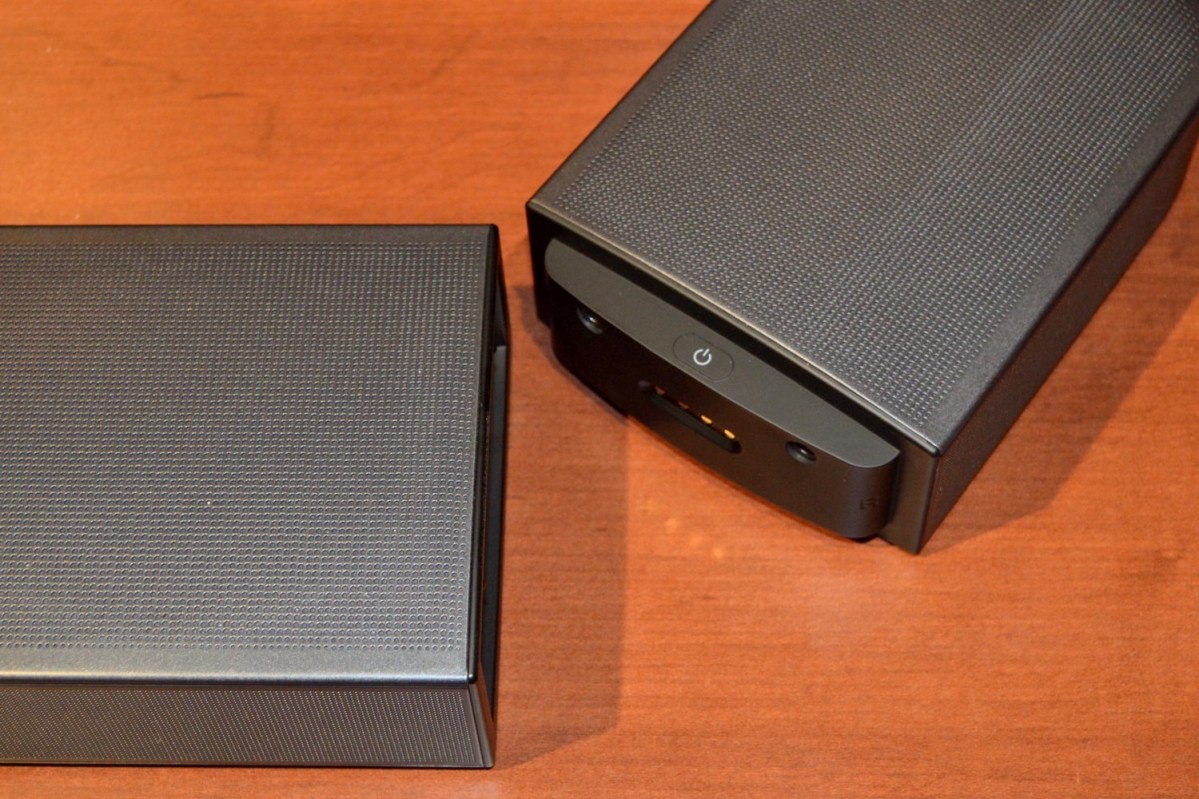
Any time you sever a physical connection between a source and a speaker, you risk interference and other connectivity problems. I’ve seen this happen on Bluetooth true wireless earbuds more than once. Sadly, it can also affect the performance of the Bar 9.1’s wireless satellites.
I noticed on several occasions that both wireless speakers suffered from a poor connection. It wasn’t a constant — most of the time things were very stable, but now and then I could hear them being interrupted. Given what I do for a living, my media room may have slightly more wireless devices than average, which could certainly have contributed, but the room itself is relatively small. The speakers were never more than eight feet from the soundbar and always had line-of-sight, without any physical barriers.
Obviously, this will play out differently depending on your personal space, but it’s something to be aware of. These speakers are wireless-only, so if you find that their connection isn’t stable, there may be very little you can do to improve it.
Our take
The JBL Bar 9.1 is an innovative solution to an age-old problem: Getting better immersive sound without losing the simplicity of a soundbar. It works. With an effortless setup and wireless speakers you can place almost anywhere, it’s a very slick design. However, barebones input options, minimal audio settings, and lackluster music reproduction are tough drawbacks to swallow at this price.
Is there a better alternative?
If the freedom of fully wireless rear satellite speakers in a soundbar is a must-have, the JBL Bar 9.1 isn’t just a good choice, it’s the only choice. But be prepared that in offering you this cool feature, JBL has cut back on other features and even on some sound quality. If you’re OK with wired rear speakers, the Vizio SB36514-G6 36″ 5.1.4 Dolby Atmos soundbar is a much better value.
How long will it last?
The Bar 9.1’s construction and materials are excellent, and the wireless satellite modules are robustly-built too, making them likely to withstand a lot of docking and undocking over the years. Keep in mind however, all rechargeable batteries die eventually and we don’t know how easy (or expensive) it will be to replace these once they’re done.
Should you buy it?
If you’re a movie hound who loves big, bold bass and has a strong desire to avoid running wires at all costs, the JBL Bar 9.1 might feel like a pretty good choice despite its shortcomings. Everyone else should think long and hard before spending $1,000 on this soundbar — you can find great Dolby Atmos sound for a lot less.
Editors' Recommendations
- Sony’s best soundbars are reborn as the Bravia Theater Bar 8, Bar 9, and Quad
- Samsung’s new Dolby Atmos wireless speaker doubles as a picture frame
- Dolby Atmos FlexConnect could eliminate home theater soundbars and HDMI cables
- Platin Audio’s wireless home theater speaker system now handles Dolby Atmos
- Sony’s latest Dolby Atmos soundbar is smart, modular, and one of its most affordable



